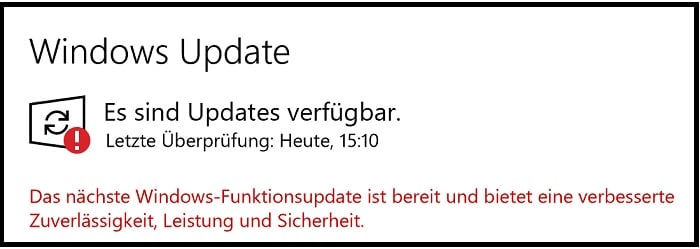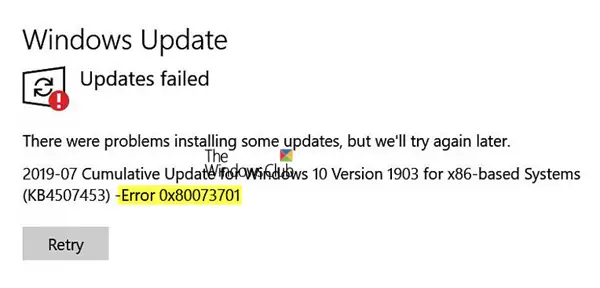

Right-click at Command Prompt result and select Run As Administrator.Ģ.At the search box type: command prompt or cmd.The next step to resolve the Windows 10 Update errors 0x80073701, 0x800f0988, is to repair the Windows Component Store by using the System Update Readiness (DISM) tool.ġ. * Note: If you cannot delete the folder, start Windows in Safe Mode.

Find and Delete the " SoftwareDistribution" folder (or rename it. Open Windows Explorer and navigate to: C:\Windows folder.Ģ. Step 4B: Delete the SoftwareDistribution folder.ġ.Right-click on Windows Update service and select " Stop". In Services control panel locate the " Windows Update" service.ģ. In the Search box, type: services.msc & click OK.Ģ.Press Windows + R keys to open the run command box.Open Windows Services control panel: To do that: Step 4A: STOP the Windows Update Service.ġ.To rebuild (re-create) the "SoftwareDistribution" folder follow the instructions below: Many times, this folder becomes corrupted and you must re-create it in order to download the updates from scratch. The "C:\Windows\ SoftwareDistribution" folder, is the location where Windows store the Windows Updates. D elete the 'SoftwareDistribution' Folder. Disconnect all external USB drives & SD cards and any other USB device that don't needed. Run Disk Cleanup and delete all the useless files. Windows 10 requires at least 32 GB of free space to upgrade. Ensure that you have enough free space on your disk. In this guide you'll find step by step instructions to resolve the errors 0x80073701 and 0x800f0988 in WindKB451739 update.

There were problems installing some updates, but we'll try again later". The error 0x80073701 may occur while trying to install the Cumulative Update for Windows 10 Version 1903 KB4517389 via Windows Update.


 0 kommentar(er)
0 kommentar(er)
